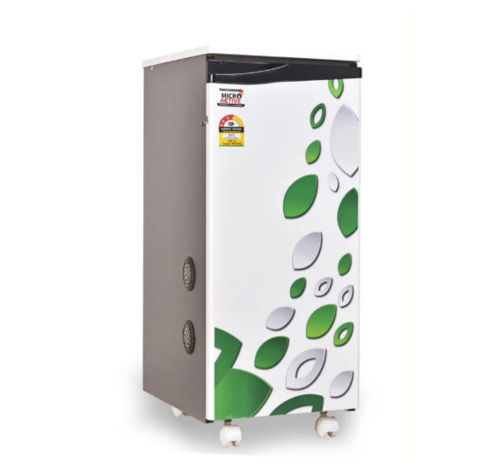chapati Making Machine
Product Details:
chapati Making Machine Price And Quantity
- 50000 INR/Unit
- 1 Unit
- 30000.00 - 60000.00 INR/Unit
chapati Making Machine Trade Information
- Paypal Cash on Delivery (COD) Cash Advance (CA) Cash in Advance (CID) Cheque Telegraphic Transfer (T/T)
- 100 Unit Per Week
- 1 Week
- Asia Australia Central America North America South America Eastern Europe Western Europe Middle East Africa
- All India
Product Description
A chapati making machine is a sophisticated kitchen appliance designed to mechanize and simplify the process of preparing chapatis, a staple flatbread in South Asian cuisine. Traditionally, chapatis are made by hand, requiring skilled manipulation of dough to achieve the desired thin, round shape. However, with the advent of chapati making machines, this labor-intensive task has been significantly streamlined.
Design and Components:
Chapati making machines vary in design and functionality but generally consist of several key components:
-
Dough Kneading Unit: This is where the process begins. The machine typically has a compartment or a section dedicated to kneading the dough. Users typically place the measured ingredients (flour, water, salt) into this compartment, and the machine kneads them into a smooth dough.
-
Dough Ball Formation: Once the dough is kneaded to the right consistency, the machine forms it into small, evenly sized balls. This step is crucial as it prepares the dough for the rolling and flattening process.
-
Rolling and Flattening Mechanism: This is perhaps the most critical part of the chapati making machine. It involves a pair of rollers or a rotating mechanism that takes each dough ball and rolls it out into a thin, round disc of even thickness. The machine ensures consistency in size and thickness, which is essential for uniform cooking.
-
Cooking/ Baking Unit (Optional): Some advanced chapati making machines include a cooking or baking unit. This unit automatically cooks or bakes the rolled-out chapatis, eliminating the need for manual handling during the cooking process. It may use direct heat, infrared technology, or other methods to cook the chapatis quickly and evenly.
-
Control Panel: Many modern chapati making machines come equipped with a digital control panel. This panel allows users to set parameters such as dough consistency, ball size, rolling thickness, and cooking time. It offers convenience and precision in operation.
Operation:
Using a chapati making machine typically involves the following steps:
-
Preparation: Users prepare the dough by mixing flour, water, and salt in appropriate proportions. This dough is then placed into the dough kneading compartment of the machine.
-
Kneading: The machine kneads the dough to achieve a smooth consistency. This step ensures that the chapatis will be soft and pliable after cooking.
-
Dough Ball Formation: The machine divides the kneaded dough into uniformly sized balls. Each ball will eventually be rolled out into a single chapati.
-
Rolling and Flattening: The dough balls are fed into the rolling mechanism of the machine. Here, they are rolled out into thin, round discs. The thickness of the chapati can often be adjusted to suit individual preferences.
-
Cooking (if applicable): If the machine includes a cooking unit, the rolled-out chapatis are automatically cooked or baked. The cooking process is typically quick, ensuring that each chapati is cooked evenly and thoroughly.
-
Collection: Once cooked, the chapatis are collected from the machine. They are then ready to be served hot and fresh.
Benefits:
The advantages of using a chapati making machine are numerous:
-
Time Efficiency: It significantly reduces the time required to prepare chapatis compared to traditional methods.
-
Consistency: Machines ensure uniformity in size, thickness, and cooking of chapatis, leading to consistent quality.
-
Labor Savings: Reduces the need for skilled labor in chapati preparation, making it suitable for commercial kitchens and food service establishments.
-
Hygiene: Minimizes direct human contact with the dough and chapatis during preparation and cooking, promoting hygiene standards.
-
Customization: Some machines offer settings for customizing chapati size, thickness, and cooking preferences, catering to diverse culinary needs.
Applications:
Chapati making machines find applications in various settings:
-
Households: For families looking to save time on daily cooking without compromising on homemade taste and quality.
-
Restaurants and Hotels: Ideal for establishments needing to produce large quantities of chapatis quickly and consistently.
-
Catering and Events: Useful for catering services that require efficient production of chapatis for events, parties, or gatherings.
-
Institutional Kitchens: Used in schools, hospitals, and other institutions where large-scale food production is necessary.
Conclusion:
In conclusion, a chapati making machine is a modern kitchen appliance that revolutionizes the way chapatis are made, offering efficiency, consistency, and convenience. Whether used in homes or commercial kitchens, these machines uphold the tradition of making chapatis while embracing technological advancements to meet the demands of modern lifestyles and culinary practices.

 Send Inquiry
Send Inquiry
